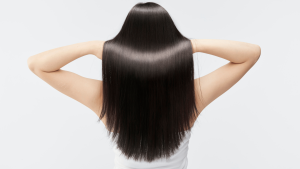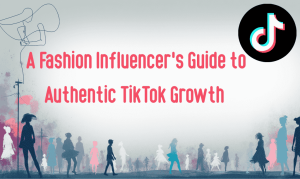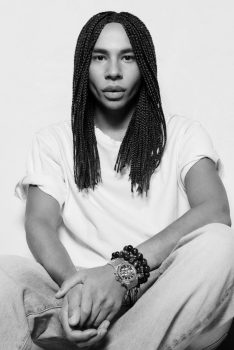Does your fashion startup struggle to identify printing solutions which offer both low costs and high quality results?
Fashion startups must stand out in a highly competitive market through innovative designs and efficient production processes. Small fashion enterprises are witnessing a transformation in their apparel production methods through the adoption of DTF printing technology.
Owners of fashion startups juggling limited budgets and strict deadlines often discover that traditional printing techniques demand compromises between quality standards and cost or production flexibility. But what if those tradeoffs were unnecessary?
What You’ll Discover:
- What Are DTF Transfers and Why They Matter
- Cost Benefits for Fashion Startups
- Design Possibilities That Set You Apart
- Durability and Quality Comparisons
- Implementation Steps for Your Business

DTF Transfers: A Game Changer for Fashion Startups
What Are DTF Transfers and Why They Matter
DTF (Direct-to-Film) transfers represent the greatest advancement in the apparel decoration technology field. The primary difference between DTF printing and both screen printing and DTG printing lies in its method of printing designs onto special film which are later transferred to fabric.
The printing process uses specially formulated inks to transfer your design onto dedicated film. Immediately before the curing step, a powder adhesive gets applied to the wet ink. Once the transfer has undergone the curing process it becomes applicable to nearly any fabric type when used with a heat press.
The global DTF decorated-apparel printing market is experiencing explosive growth, valued at $2.56 billion in 2023 and expected to reach $3.99 billion by 2030, with a compound annual growth rate of 6.5%.
Through DTF transfers fashion startups can achieve premium apparel quality while minimizing their investment costs. High-end brands can meet premium quality standards by producing small-batch designs that showcase vibrant colors and detailed craftsmanship.
Cost Benefits for Fashion Startups
Effective financial management is essential for fashion startups since financial resources directly drive business success. The high initial expenses required to establish screen printing facilities make it financially unfeasible to run small batch productions. DTF changes this equation dramatically.
Your startup gains various financial benefits through the use of DTF transfers.
- • Launch your fashion business without investing heavily in industrial printers and large space rentals.
- • DTF printing lets fashion startups create personalized designs without needing to meet minimum order requirements.
- • DTF transfers avoid the setup expenses that screen printing demands because of its need for numerous color screens.
- • Your business produces less waste when it prints only essential quantities at the precise moment they become necessary.
Consumers’ feedback on new designs allows fashion startups to assess market interest before investing in large-scale production. Businesses gain greater operational flexibility and reduce excess inventory through the “test and learn” strategy.
Design Possibilities That Set You Apart
Innovative design concepts are essential to stand out for your brand in a saturated fashion market. Designers can now achieve creative ideas previously available only to large manufacturers because DTF transfers eliminate extensive equipment investment requirements.
DTF transfers succeed in delivering excellent outcomes for applications where other printing techniques face challenges.
- • DTF transfers produce full-color photorealistic images which display smooth gradients without color limitations.
- • DTF transfers enable exact replication of tiny text and detailed patterns.
- • DTF transfers create colors which remain vibrant on dark substrates without requiring a white base layer.
- • Available special effects options consist of metallic finishes alongside neon colors and glow-in-the-dark elements.
- • DTF printing works well with various fabrics including cotton and polyester as well as difficult fabrics such as nylon.
The expanded design palette available through modern printing methods enables fashion startups to realize their creative ideas without facing past technical limitations. The DTF printing method works effectively with all types of design complexities.
Digital printing technologies such as DTF will drive the UK custom T-shirt printing market to expand from $310.48 million in 2023 to $526.78 million by 2032. Fashion startups gain competitive market advantages by adopting new technologies which provide design capabilities that match or exceed established brands.
Durability and Quality Comparisons
Quality matters in fashion. DTF transfers surpass competing printing methods by delivering exceptional durability.
- • DTF transfers match the toughness of screen print while providing brighter colors and more detailed designs.
- • DTF transfers offer superior wash fastness compared to DTG printing while providing compatibility with a broader range of fabric types.
- • DTF transfers provide enhanced breathability and softer hand feel and allow for more detailed designs than vinyl.
- • DTF transfers maintain functionality across every fabric type and color rather than being confined to white polyester alone.
When applied correctly DTF transfers will withstand more than 50 washes as they resist both fading and cracking. DTF printing embeds designs into fabric material resulting in a soft texture that customers prefer.
Implementation Steps for Your Business
Are you ready to integrate DTF transfers into the operations of your fashion startup company? Here’s a straightforward implementation path:
1. Decide Your Production Approach
- • Fashion startups facing spatial or budget restrictions must use specialized providers for DTF • transfers instead of handling them internally.
- • Brands that maintain consistent production levels benefit from bringing production processes inside their organization.
New fashion companies should use outsourced production to evaluate market potential without committing to significant equipment purchases.
2. Prepare Your Designs
Your design work should include high-resolution images at 300 DPI and vector graphics for logos and text with clear color separation that matches fabric requirements.
3. Select Your Garments
DTF is compatible with virtually any fabric. When choosing sustainable fashion items assess fabric quality standards and weight specifications alongside available color choices and supplier dependability.
The rise in demand for personalized apparel combined with advances in sustainable DTF printing technology enables fashion startups to adopt eco-friendly production practices right from the start.
4. Test, Measure, and Scale
Start quality control testing with product samples prior to full production runs while assessing wash durability and customer feedback to finalize costs and pricing strategy.
Bringing It All Together: DTF for Your Fashion Brand
DTF transfers represent an innovative technology that levels the playing field for new fashion companies. DTF technology lowers market entry hurdles and provides outstanding design versatility combined with scalable production capabilities which allows small brands to compete directly against well-known companies.
By 2030 the global DTF market will reach $3.99 billion in value because of its essential role in fulfilling fashion industry requirements. DTF transfers establish an operational process that allows startups to enter the market quickly while delivering top-notch products.
- • Get to market faster with professional-quality products
- • Test designs without breaking the bank
- • Maintain consistent quality as you scale
- • Adapt quickly to changing market demands
- • Build sustainability into your production model
DTF transfers allow quick market adaptations enabling rapid testing of new ideas and seasonal collections alongside support for limited edition releases. Businesses need this flexibility because industry consumer preferences often shift dramatically within a single day. DTF technology allows you to conduct small-scale market tests before proceeding to full production.
With DTF technology, fashion startups can create vibrant and impressive designs while ensuring high standards of quality. The main concern revolves around how quickly you can use DTF transfers’ benefits in the growing market rather than whether you should adopt them for production.

fashionabc is a fashion technology platform, comprising a digital directory and various other digital tools and supply chain solutions for the fashion industry ecosystem, that focus on ethical fashion and sustainability. We are building inclusive digital transformation tools for fashion professionals who are willing to take steps towards a more sustainable ethical fashion industry, by adopting AI and DLT blockchain technology.
* building digital profile and IP solutions for fashion businesses
* tackle issues such as provenance and counterfeit in supply chain
* contribute to the construction of a meritocratic ethical fashion industry which is certified and part of the circular economy










